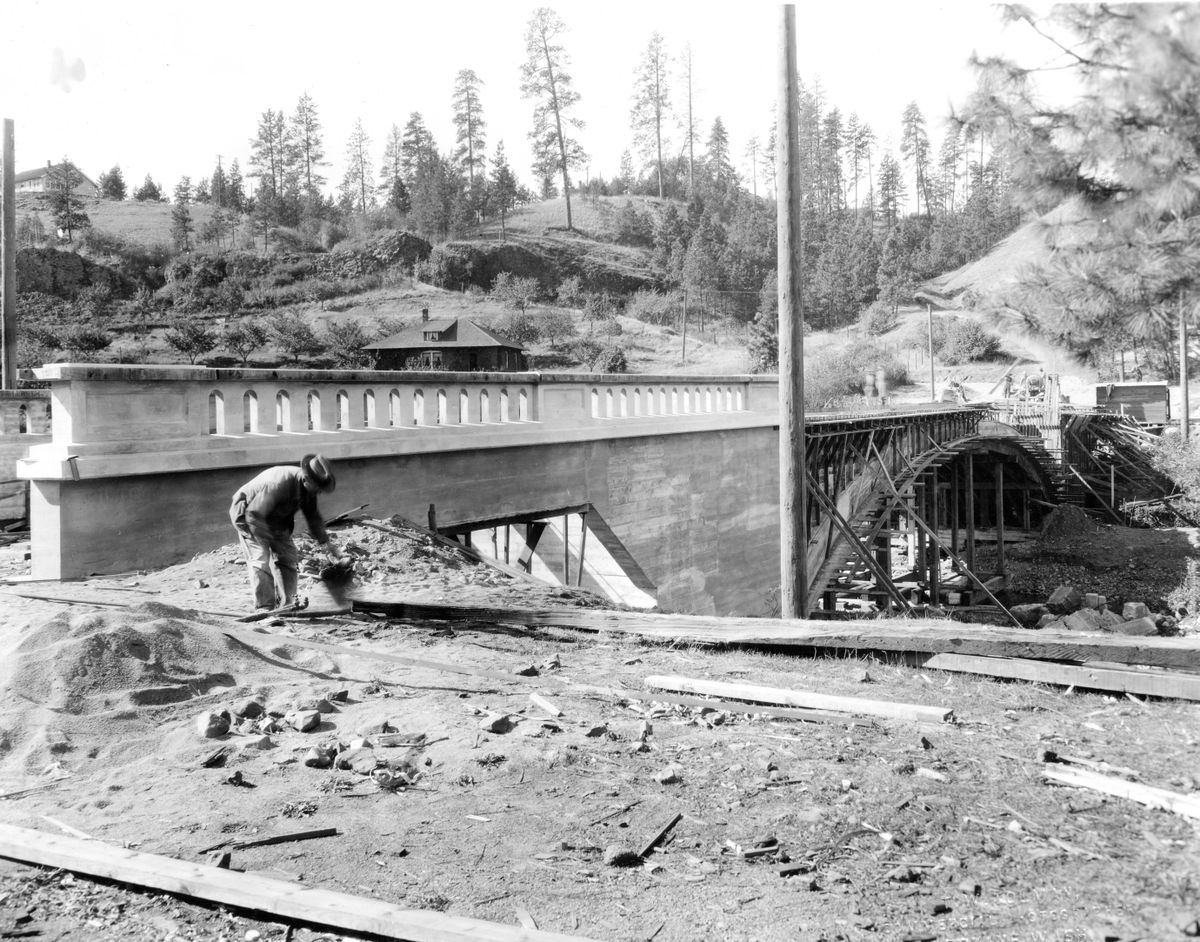Then and Now: 11th Avenue Bridge

The Spokane River divides the city of Spokane, forcing the construction of bridges large and small to keep the city connected.
On a much smaller scale, the Latah Creek to the south has presented a similar challenge .
Latah Creek, also known as Hangman Creek, once wound through grassy fields that were home to a village of the Middle Spokane Indians through the 1880s.
It was only a few years after the arrival of city founder Jimmy Glover in 1873 that Joshua R. Stafford arrived from Ohio, homesteading along Latah Creek where he began farming. He saw the potential for a neighborhood on his land, which he platted with streets and home sites in 1888.
Calling the development Stafford’s Addition, Stafford sold home sites there. It wasn’t far to Browne’s Addition, though it was still a long walk uphill from the downtown area. Traffic on Stafford’s streets were horse-drawn buggies and farm wagons carrying people and produce from Walla Walla, Pullman and Colfax.
One of the first amenities Stafford added was a simple bridge across Latah Creek. The Stafford Bridge, opened around 1891, was a steel frame with wooden timbers on top.
Stafford’s neighborhood would get a new nickname when the Keller-Lorenz Vinegar Works started up at the corner of Spruce Street and 11th Avenue with old equipment from the former brewery of John F.G. Hieber, which moved to another location in town.
Because of frequent and unpredictable flooding of Latah Creek, the bridge was sometimes damaged by the scouring waters of annual floods.
In 1909, floodwaters washed away one end of the Stafford Bridge.
Crews worked through the night to protect it by keeping deck timbers from disappearing into the rushing water.
As the city planned a concrete replacement, the old Stafford Bridge was dismantled and reset at the current 11th Avenue Bridge site, saving the city $2,700 for a new bridge.
The bridge allowed horse and buggy traffic onto a route going north and west toward Fort Wright, Medical Lake and Cheney.
The city of Spokane, estimating that the 11th Avenue Bridge carried around 400 people per day, finally replaced it with a new concrete structure in 1927.